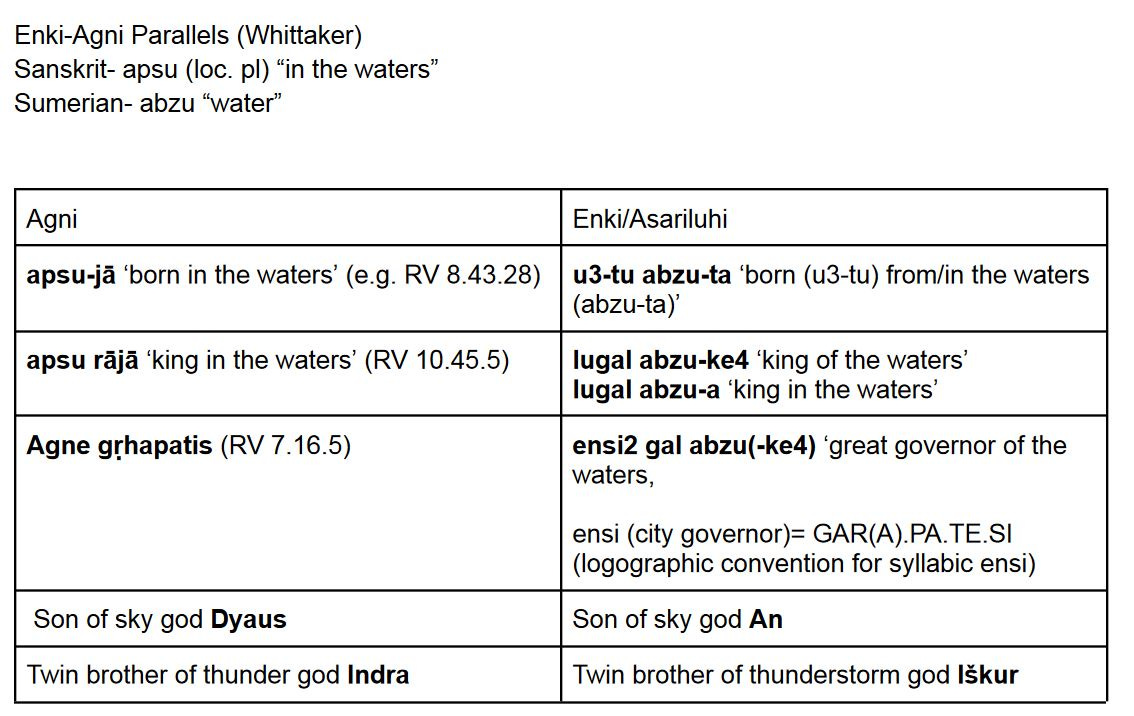Indo-Aryan words in Sumerian
Several words of Indo-Aryan origin can be identified in the Sumerian language, which can be helpful in determining the linguistic affiliation of the Indus Valley Civilization.
S. Vyas in his working paper Indus Musicians in Mesopotamia has identified several music & trade-related words in Sumerian of Sanskritic origin. This short post will focus mostly on non-trade-related words which were likely introduced in Sumerian by the Meluhhan (IVC) Settlers.
It may be noted that the loanwords of the Old Babylonian period (1900-1600 BCE) are not attested in Akkadian. Therefore, the actual borrowings must have taken place before that, when Sumerian was still a spoken language.
Sumerian dictionary: http://psd.museum.upenn.edu/nepsd-frame.html
Sum. Kiduru "damp ground, irrigable land" from Skt. Kedāra “a field or meadow, especially one under water”
Sum. Kasu "goblet; bowl" from Skt. Kaṃsa "drinking vessel, cup, goblet
Sum. šita3 "water-channel, pipe" from Skt. sītā
Sum. tud2 "to hit, beat" from Skt. tud “to push, strike”
Sum. kizurra “sharp edge” from Skt. kṣura “razor”
Sum. mud “joy” from Skt. mud “joy”
Sum. imdu “dew” from Skt. indu “drop’
Sum. kezer “hair” from Skt. kesara “hair”
Sum. mah “great” from mahā “great” [Also confirmed by Russian linguist V.V. Emelyanov, who conducted a detailed case study on the word and concluded “Of all the Indo-European variants Sumerian mah can only be matched in form to Sanskrit”]
Sum. ninka “mongoose’ from Skt. nakula “mongoose”
Sum. mul “foundation’ from Skt. mūla “foundation”
Sum. Lag "clod (of earth), lump" = Skt. Loga "a clod of earth, lump of clay, clod" [Phoneme /o/ is absent in Cuneiform/ Sumerian]
Sum. ašte “chair, throne, dwelling” from Skt. asta “home”
There are also strong parallels between Sumerian god Enki and Vedic god Agni as highlighted by Whittaker & Jean-Yves
.

















